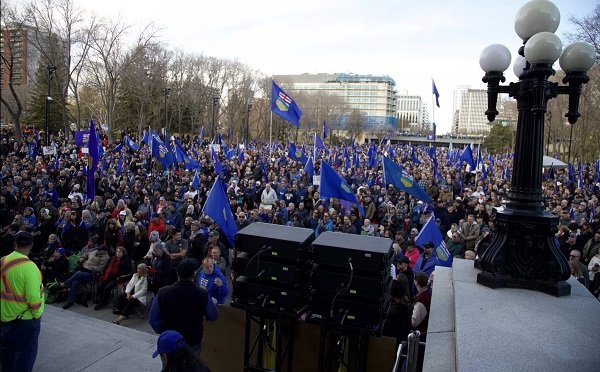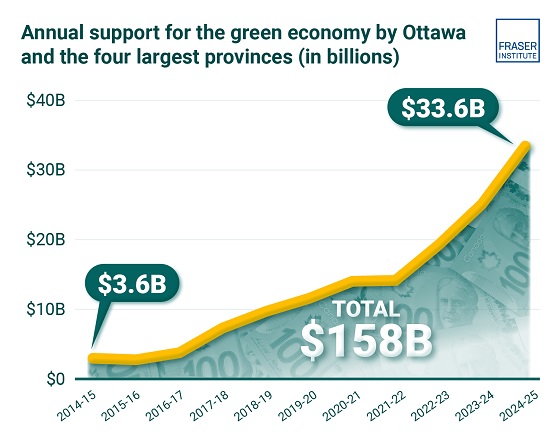Alberta
Pray for better days – a 3rd generation oil worker laments the end of an industry

by Sheldon Gron (published with permission)
I’ve been debating on whether or even how to write this over the last few weeks. I’m a third generation oilfield worker, a large portion of my family being involved with the oilfield in some way. Its sad to say, but I really truly honestly feel that the oilfield in Canada is officially dead. Sure there will be a little here and there, some guys will get a little work and even less will get consistent work, but all in all, to be an oilfield worker as a career is over. Nothing pains me more than to be saying this as I myself have over 20 years in the industry, an industry which I used to love and was proud to be apart of.
The industry has always worked in cycles, most of us know this. It was feast or famine. Best you could do was get the money while the gettin’ was good and save the best you could to prepare for the next slow down. Some were smart, most were not. Debt would ring up, slow down would hit and more debt would add up until bankruptcy loomed. Most slow downs lasted at most a year but usually turned around and guys would get 3 or 4 years of good times to recover and prepare for the next one. Take this most recent slow down in 2014. Writing was on the wall BUT no one expected it to hit as hard as it did. The world shook as oil prices fell to near 1998 prices. Within a few years though prices started to climb, enough so that work started to return. Not a ton, but enough that the guys left in the patch were finding work.
2018 there was finally some hope, there seemed to be some sort of light at the end of the tunnel but this whole pipe line mess loomed over us. You see Canadian Crude has always had its own value, lately a value significantly lower that everyone else due to our lack of infrastructure to get oil to market. With our current government and their apparently efforts to stop the much needed pipe line, Western Crude prices fell, investments pulled and companies lost faith… Canada is now suffering another oilfield crash, on top of the previous one. Heres the problem.
Anyone that has survived thus far is at the end of their rope. Toys are sold, saving have been spent to survive these last 4 years and now that another slow down is here, there is nothing to fall back on. Faith in the patch is gone as the hands and small businesses are in real trouble this time.
We are 8-10 year away from any of this ever turning around at the earliest, save some major event happening that sends oil to 200 a barrel. Lets face it, without a means to get our oil to market, no one wants it and who can blame them. Our government has severely let us down and 2019 is going to mean some serious trouble for Canada. I have done every thing I can to stick it out in the only career I know and don’t know how much longer I can go living pay check to pay check meanwhile being away from my family 25 days a month just to get by, and thats when I’m busy. If I was young and new to the oilfield I wouldn’t come anywhere near the oilfield as its apparent there is no future. You used to come here to make money, now, when you can actually get work, the money isn’t that great anymore.
I know some of you have very little sympathy for oilfield workers because you have always seen the money they have made but let me explain the repercussions of no oilfield in Alberta, Sask or Northern BC. Before the crash, entry level oilfield workers made over 100K a year. In order to do this they usually spent about 230-250 days a year away from their friends and families in all weather conditions working all sorts of hours. At times these conditions could be some of the most gruelling with sometimes not the nicest people. But it was a job and it paid well. That’s from their perspective. These same people that do this job pay 30% or more in taxes to our government. They pay more in taxes that many people make in an entire year, thats entry level, now take the people that are pulling in 200-250K. All that tax money is gone, no longer paying for schools and hospitals and roads and such. Now consider those lifted trucks and toys they buy with the money they earned with their oilfield money. All that money went to local businesses and local people that didn’t work in the oilfield. Salaries were paid, cloths were bought with that money those people earned from selling that truck or quad or what ever they buy.
Also consider the money they spent in the places they worked, supporting locally. Hotels, gas stations and grocery stores, restaurants and bars and so on. Alberta was successful and one of the richest provinces for one reason, OIL MONEY and now it is gone. Go to another have not province and ask them what its like to not have jobs and see what they think. Ask the number of people born across Canada that have come to Alberta for the Alberta Advantage why they came. Our Federal government had one mission regarding Alberta, and that was to bring it to its knees and we have let them do it. The oil field is dead and we let it happen. They panic cause 2500 of Ontarios people lost their jobs because GM shut down a plant yet 150K Albertans have lost their jobs and more are coming.
Alberta
Thousands of Albertans march to demand independence from Canada

From LifeSiteNews
Thousands of Albertans marched upon the province’s capital of Edmonton this past Saturday in the “I Am Alberta Rally,” calling for the province to immediately secede from Canada in light of increasing frustration with the Liberal federal government.
The rally saw an estimated 20,000 to 30,000 people march on the steps of the Alberta legislative building, demanding that a referendum be held at once to allow Alberta to leave Canada.
“We can’t delay. We can’t slow down,” well-known freedom lawyer Keith Wilson said at the rally as he spoke to the crowd.
“This is our moment. This is our future. For our families, for our children, for Alberta. Alberta will be free.”
The group behind the rally, the Alberta Prosperity Project (APP), bills itself as a sovereignty advocacy group. As reported by LifeSiteNews earlier this year, the APP wants to put Alberta independence to a question to the people via a referendum.
The rally also comes after certain members affiliated with the APP such as Jeffrey Rath and Dr. Dennis Modry earlier the month met in Washington, D.C. with cabinet-level U.S. politicians to discuss Alberta’s potential independence from Canada.
U.S. President Donald Trump has routinely suggested that Canada become an American state in recent months, often making such statements while talking about or implementing trade tariffs on Canadian goods.
The APP on July 4 applied for a citizen-led petition presented to Elections Alberta that asks, “Do you agree that the Province of Alberta shall become a sovereign country and cease to be a province in Canada?”
The group is hoping to have the referendum on the ballot as early as next year and has accused the Liberal federal government of encroaching on Alberta’s ability to manage its own affairs.”
The group says an independent Alberta would allow it to “keep our resources, grow our economy, and reinvest in Alberta families, businesses and infrastructure.”
As it stands now, the referendum question has been referred to the courts to see whether or not it can proceed.
Alberta Conservative Premier Danielle Smith does not support a fully independent Alberta. However, she does advocate for the province to have more autonomy from Ottawa.
As reported by LifeSiteNews, Smith said her conservative government will allow but not support a citizen-led referendum on independence.
Despite not advocating for an outright separate Alberta, Smith’s government has not stood still when it comes to increasing provincial autonomy.
Smith’s United Conservative government earlier this year passed Bill 54, which sets the groundwork for possible independence referendums by making such votes easier to trigger. The bill lowers the signature threshold from 600,000 to 177,000.
As reported by LifeSiteNews last week, Smith’s government introduced a new law to protect “constitutional rights” that would allow it to essentially ignore International Agreements, including those by the World Health Organization (WHO), signed by the federal Liberal government.
The calls for independence have grown since Liberal leader Mark Carney defeated Conservative rival Pierre Poilievre.
Carney, like former Prime Minister Justin Trudeau before him, said he is opposed to new pipeline projects that would allow Alberta oil and gas to be unleashed. Also, his green agenda, like Trudeau’s, is at odds with Alberta’s main economic driver, its oil and gas industry.
Alberta
Premier Smith sending teachers back to school and setting up classroom complexity task force

Taking action on classroom complexity
As schools reopen, Alberta’s government is taking action by appointing a class size and complexity task force to meet the challenge of increasingly complex classrooms.
Across Alberta, teachers are seeing more students with diverse learning needs and behavioural challenges, while incidents of classroom aggression are rising. To address these challenges head on, and in response to concerns raised by teachers, Alberta’s government will be appointing a Class Size and Complexity Task Force.
We recently formed the Aggression and Complexity in Schools Action Team to identify practical classroom focused solutions. Alberta’s government has received the action team’s draft final report and will use its recommendations to create a roadmap for safer classrooms. Alberta’s government will release the final report, and the task force will implement solutions, work with school boards to gather more data on classroom complexity and begin work to replace the 2004 Standards for Special Education.
“Teachers have made it clear that addressing classroom complexity and safety are among the most critical improvements needed in our education system. We are taking real action to meet those needs by strengthening classroom supports, hiring more teachers and educational assistants, and acting on the recommendations of the Aggression and Complexity in Schools Action Team. Parents, teachers and students all want the same thing – safe and supportive classrooms where every child can succeed.”
Teachers are vital to the success of Alberta’s education system. Over the next three years, school boards will be provided with funding to hire 3,000 teachers and 1,500 new education assistants to support students with complex needs. These funds may also be allocated to additional student support through assessments for complex needs, occupational therapy, physiotherapy or speech-language pathology, and other in-the-classroom supports.
“No teacher should ever be harmed while doing their job. We know that aggressive incidents have gone up sharply in recent years, and classrooms are becoming more complex. That’s why we’re doubling down on efforts to make classrooms safer and to give extra support to students who need it. Our goal is to create learning environments where every student can succeed.”
In November, Alberta’s government will work with school boards to gather information and data about class sizes and composition to ensure students are receiving the support they need. Information will be made available as soon as it is available and will be released annually thereafter.
Quick facts
- Between July and September 2025, the action team conducted engagement sessions with teachers, education partners and school boards through in-person and virtual sessions.
- This included front-line educators, families, disability organizations, community agencies, early learning experts and social service professionals.
- Budget 2025 included $55 million to help address classroom complexity – a 20 per cent increase from the previous year.
Getting Alberta’s kids back to school
If passed, Bill 2, the Back to School Act, will restore stability in Alberta’s education system and ensure students can return to learning without further disruption.
The ongoing teachers’ strike has disrupted classrooms across Alberta, setting back student learning and deepening achievement gaps. Each day schools remain closed, students lose critical instructional time, routine and support. This proposed legislation will end the strike and establish reasonable terms for a new teacher collective agreement.
“This strike has gone on long enough. It’s clear there’s no path forward unless we act. The Back to School Act refocuses everyone on what matters most, the education of Alberta’s students. Bill 2 puts students back at the centre of our system, while we continue to work with teachers and families to build lasting stability in Alberta’s schools.”
The Back to School Act legislates the terms of the September 2025 tentative agreement, which provided a 12 per cent salary increase over four years, additional market adjustments of up to 17 per cent for most teachers, and the hiring of 3,000 teachers and 1,500 educational assistants. The collective agreement will be in effect from Sept. 1, 2024, to Aug. 31, 2028.
“The time for labour stability is now. This legislation provides a positive path forward despite an interrupted school year. This is a necessary step and the most responsible decision for kids, teachers and parents. If Bill 2 is passed, it is my hope that classes will resume as soon as Wednesday, October 29.”
The last deal put on the table by the Alberta Teachers’ Association demanded an additional $2 billion from government. This was a clear display that the union had no intention to bargain in a reasonable manner with the government and present a fair offer.
“We believe invoking the notwithstanding clause is a necessary measure to end the undue hardship caused by the teacher strike. This strike has reached a point that is causing irreparable harm on student learning. Our government will not hesitate to use every available legal tool in defence of students.”
This legislation is the only responsible path forward to restore stability, protect students and ensure Alberta’s classrooms focus back on learning. Alberta’s government remains fully committed to strengthening the education system, supporting teachers, and putting the success and well-being of students at the heart of every decision made.
Key facts
- Bill 2 would end the province-wide teachers’ strike and legislates a new collective agreement.
- The agreement covers Sept. 1, 2024, to Aug. 31, 2028 and provides:
- A 12 per cent salary increase over four years.
- Additional market adjustments of up to 17 per cent for 95 per cent of members.
- 3,000 new teachers and 1,500 educational assistants to reduce class sizes and enhance support.
- These terms reflect the September 2025 tentative agreement recommended by the Alberta Teachers’ Association leadership.
- The legislation includes financial penalties for non-compliance and suspends local bargaining during the agreement to ensure labour stability through 2028.
-

 Business1 day ago
Business1 day agoTrans Mountain executive says it’s time to fix the system, expand access, and think like a nation builder
-

 Alberta2 days ago
Alberta2 days agoPremier Smith sending teachers back to school and setting up classroom complexity task force
-

 Alberta2 days ago
Alberta2 days agoThousands of Albertans march to demand independence from Canada
-

 Crime2 days ago
Crime2 days agoSuspect caught trying to flee France after $100 million Louvre jewel robbery
-

 Addictions1 day ago
Addictions1 day agoThe Shaky Science Behind Harm Reduction and Pediatric Gender Medicine
-

 Economy1 day ago
Economy1 day agoStunning Climate Change pivot from Bill Gates. Poverty and disease should be top concern.
-

 Business1 day ago
Business1 day agoClean energy transition price tag over $150 billion and climbing, with very little to show for it
-

 Business1 day ago
Business1 day agoFlying saucers, crystal paperweights and branded apples: inside the feds’ promotional merch splurge










